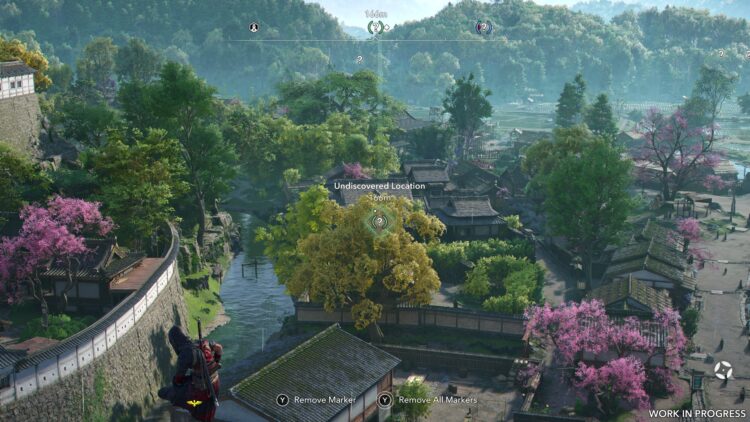As part of our visit to Ubisoft Singapore, in addition to previewing Assassin’s Creed Shadows we also got a chance to chat with Luc Plante, level design director at Ubisoft Quebec who is also the game’s quest director; and Cassandra Poon, associate producer at Ubisoft Singapore. It was a short chat, but I did get a better picture as to why the publisher went with its dual protagonist setup.
If you’ve not read my breakdown of the game in its preview build, the long and short of it is that, while I’ve only been provided a vertical slice, it’s clear that the two playable characters of Assassin’s Creed Shadows aver very different. Naoe is the classic assassin character, which climbs up structures like a squirrel up trees, and while she can fight, she can afford to take less hits and thus is more dependent on tools to win encounters where she is overwhelmed by sheer numbers. Yasuke, on the other hand, is a boulder – a rock that doesn’t break easily when struck, but is also too heavy to heave up tall buildings.

Plante says that this is a deliberate design choice, and why Assassin’s Creed Shadows features two characters representing different character archetypes. And from a gameplay perspective, it’s makes sense to me, to some degree at least, why Ubisoft went down this route. It’s probably easier to make one character interact with combat and parkour a certain way with another doing the opposite than having one character cover both extremes depending on what they’re wearing. Unfortunately, I was not able to confirm definitively if this was the logic behind the decision.
For better or worse though, unless you’re looking to do a challenge run it does mean that you’ll probably be playing as Naoe for most of the game, and Yasuke only when you know there’s a combat bit coming. The former being lighter on her feet means not only more nimble climbing, but also less noise when sneaking, and less bulk to hide visually from enemies.

Going on a slight tangent, I did ask if the darkness mechanic in Assassin’s Creed Shadows was something that was lifted from the Splinter Cell series. I was told that it was not the intention of the devs to lift mechanics from the Ubisoft portfolio, but more just the natural evolution of stealth gameplay mechanics.
Circling back to the dual protagonists of Assassin’s Creed Shadows and whether or not it was a good call, things are less clear from a narrative perspective. From the one chapter that was available in the preview’s vertical slice though, it seems to go both ways.

For Yasuke, as the samurai he is almost always in the open, and the friendly NPCs are just that – friendly. They show neither the high regard that you’d expect the peasant class to show a samurai, nor the scorn for the foreigner that he is. In story cutscenes, this plays out similarly for Naoe, and mostly for the worse from an immersion perspective. She is quite in the open in story cutscenes, and some of the important NPCs in Assassin’s Creed Shadows know that she’s a shinobi.
I’ve previously argued that Ghost of Tsushima has proven that it’s entirely possible to blend the samurai and shinobi fantasies into one character, and I still stand by it from a writing and narrative standpoint. But Plante explained that the devs at Ubisoft are trying to tell two different stories as well with Assassin’s Creed Shadows – one of a local perspective and another of an outsider – in addition to the two different gameplay experiences.

Which brings us back to Yasuke. The aforementioned outsider perspective to Warring States period Japan is the reason Ubisoft made him, a historical character that actually exists, as a playable character rather than a notable NPC quest giver. And it’s something that the publisher felt strongly enough to break from said tradition with Assassin’s Creed Shadows. Which is a pretty strange justification considering said setting.
Of the many settings the series has been in, feudal Japan is easily one of the most popular one in fiction, and that sort of familiarity would mean it least benefits from an outsider perspective. At least, compared to the likes of Colonial America, Renaissance Italy or Industrial Revolution London, to say nothing of Third Crusade Jerusalem, or Ancient Egypt and Greece. Or maybe this is just my geographical bias speaking.

With all that in mind, I do wonder what is with the publisher’s obsession with the outside perspective for Assassin’s Creed Shadows when other games could have used it more. Unfortunately, this was another question that I did not have time to ask. But when the game finally releases on 20 March, hopefully the plot of the game will answer the question.
Follow us on Instagram, Facebook, Twitter or Telegram for more updates and breaking news.



